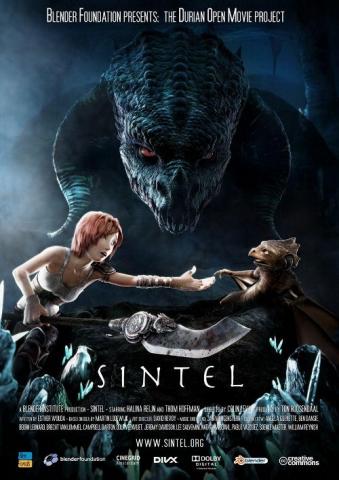Sintel Introduces the Next Generation in Animated Films

When I think of (a) Blender, I think of a device for making slushy adult beverages, not an Open Source tool for rendering images, despite coverage in Linux Journal by Ben Crowder, Robin Rowe, Dan Sawyer and Dave Phillips to name a few. In fact, I am surprised I do not know a lot more about Blender. But if you, like me, feel like you have been living under a rock, let me introduce you to Sintel, the third Open Movie by producer Ton Roosendaal.
According to the press release:
For over a year an international team of 3D animators and artists worked in the studio of the Amsterdam Blender Institute on the computer-animated short 'Sintel'. This independent production was financed by the online user community of the free program Blender, supported by the Netherlands Film Fund, CineGrid Amsterdam, and with sponsorship from international companies.
I encourage you to go and look at what they have done. Sintel, as a movie, probably would not get two thumbs up for plot or original dialogue, but I do not consider plot any more important in Sintel than I do in any of Pixar's Shorts. Sintel is a demonstration piece. It is an example, not only of what you can do with Open Source software, such as Blender, GIMP, MyPaint, Alchemy, Python, Inkscape, Subversion, Ubuntu, and OpenEXR, but it also is a demonstration of what movie making, especially animated movie making can be.
We have come a long way in movie graphics from Tron or The Last Starfighter and while bad animation or CG can ruin a movie, it is also true that without a good story, even the best tech cannot save one (The Net? Anyone? Hello?...). With Blender and the other tools availble to graphic artists, there is no question that what was the purview of studios like Pixar and ILM only a few years ago is now availble to anyone with the skills and the CPU. In fact, just the other day I was watching a show where they were using Blender to create a gryphon "in real time" on what looked like a very "basic" home computer. The end results were spectacular, and this was television.
I want to quickly highlight the funding. Because of the Open nature of the tools and the comodity hardware that they run on, it becomes easier for anyone to create a top notch movie, distribute it and become recognized. The potential downside is, of course, our friends in the establishment who will continue to fight against this sort of thing. For example, there has been some consternation on the part of a couple of independent film producers who want their non-distributed (through the studio system) film listed in IMDB, the source for all things related to movies and television. IMDB does not recognize films not distributed through the studio system, therefore they will not list it. One also has to wonder if the various guilds (unions) will want to get their pounds of flesh out of the independent movie game as well.
Clearly, as in most things, for every great stride we make forward in terms of the technology, we force the old guard to re-evaluate their models. But in the case of Sintel, my hat is off to the producers and the artists and actors who made it happen. It is a wonderful example of what can be done, and I hope they continue along the path they have started.
Image courtesy of Blender Institute B.V.

